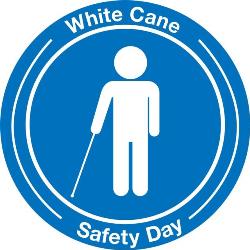White Cane Day is observed worldwide to recognize the movement of blind people from dependency to full participation in society. It is celebrated on October 15 every year. It also reminds people about the how the white cane is an important tool in helping the blind and the visually impaired live with greater independence.
The symbol of the white cane can be perceived by many as a symbol of blindness or visual impairment. White canes are recognized for providing the visually impaired with greater mobility, allowing them to participate more within their communities.
The first laws regarding the right of blind people to travel independently with the white cane was passed in 1930. It granted blind pedestrians protection and the right-of-way while carrying a white cane.
In 1966, Dr. Jacobus tenBroek, the founder of the National Federation of the Blind, drafted the model White Cane Law. This model act–which has become known as the Civil Rights Bill for the Blind.
In 1963, the National Federation of the Blind called upon the governors from every state to proclaim October 15 of each year as White Cane Safety Day.
By 1978, the number of visually impaired people who achieved a lot of independence through the white cane had greatly increased.
On White Cane Day people from all across the world re-affirm their commitment to improve access to basic services for blind and visually impaired people.
Organizations, such as Lions Clubs International and the National Federation of the Blind, organize promotional activities involving the public as part of a goal to help to increase awareness of the use of the white cane and the laws that govern its use.
Activities such as visual displays, walks, meetings, public service announcements, and the distribution of t-shirts reminding people about the day are all part of the day’s activities.
This day also reminds people that motor vehicles and pedestrians should allow the right of way to blind or visually impaired people using canes.
(Prepared by Seema Kumari)


